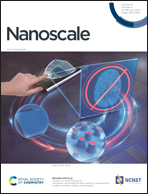Gas-induced controllable synthesis of the Cu(100) crystal facet for the selective electroreduction of CO2 to multicarbon products†
Abstract
Electrocatalytic CO2 reduction (ECR) to high value-added chemicals is an excellent method to attenuate the impact of greenhouse effect caused by CO2. At the same time, multicarbon products (C2+) get extensive attention in view of their relatively high energy density and market price. At present, Cu is an important metal electrocatalyst to convert CO2 into multicarbon products (e.g. ethylene, ethanol, and n-propanol); however, its poor selectivity impedes its practical application. It is well-known that the Cu(100) crystal facet can enhance the selectivity toward multicarbon products among different Cu crystal facets. Herein, the Cu nanoparticles were firstly prepared using the inductive effect of different gases (CO2, CO, Ar, N2, and air) during the Cu electrodeposition processes, in which the CO2-induced Cu catalyst (Cu-CO2) showed the largest normalized content of the Cu(100) crystal facet and the highest C2+ faradaic efficiency of 69% at a current density of 80 mA cm−2 in ECR. Subsequently, the different CO2 pressures during the Cu electrodepositions were studied to reveal the optimal CO2 pressure in the CO2-induced Cu synthesis for improved Cu(100) content as well as C2+ faradaic efficiency. Finally, density functional theory (DFT) calculations confirmed that CO2 molecules preferred to get adsorbed on the Cu(100) crystal facet, which resulted in not only the presence of dominant Cu(100) during the CO2-induced Cu synthesis but also the good electrocatalytic performance in ECR.



 Please wait while we load your content...
Please wait while we load your content...